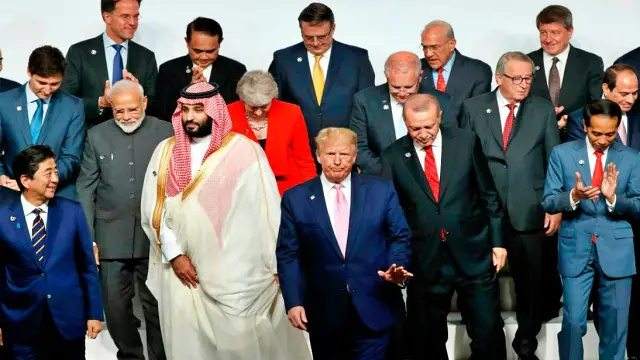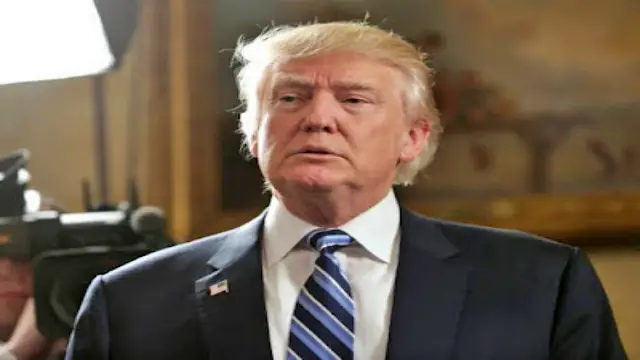Key Points
The US has dropped out of the Paris Climate Agreement, but India, China, and the EU are stepping up to be the new global leaders on climate change.
The United States has abdicated responsibility under the Paris Climate Agreement, going where only Syria and Nicaragua have gone before, in refusing to play by globally agreed rules. While this is a blow to the fight against climate change, recent history suggests that a new “G3” – the EU, China, and India – can fill the vacuum in leadership, plus the private sector in the US is already committed to renewable energy.
There are three reasons to be hopeful:
1) The private sector and finance in the United States continue to support renewables.
The US is a leading source of renewable energy technology and finance, and is at the forefront of research around emerging frontiers such as energy storage. It has pledged the largest amount to the Green Climate Fund ($3bn), of which $1bn has already been disbursed. The rest of the contribution is now threatened, which could be an impediment to technology transfer to the developing world. However, the American private sector is likely to step up in its quest to reach global markets and push towards price competitiveness as well. Industry signals back this up –General Electric CEO Jeff Immelt recently tweeted: “Industry must now lead and not depend on government.”
On the financing side, the increasing value of renewables may mitigate the effect of any reductions to the Green Climate Fund. For example, 2016 saw deals in many countries where the cost of solar energy was well below the cost of power from coal.
2) The United States is no longer at the forefront.
There have been worries that the US exit from the Paris Agreement will trigger others to do the same. This is unlikely, as narratives have shifted away from this being a zero-sum game towards being a goal that is worth acting upon in the national interest. A move away from fossil fuels used to imply losing global competitiveness, but now the prices of renewable energy suggest otherwise. Europe and the global south, including rising powers India and China, have remained vocal supporters of the Paris Agreement, combating climate change, and embracing renewable energy.The boom in renewable energy investments in India, China, Japan, the US and EU countries has led to a plummet in renewable prices; this is unlikely to abate.
We believe that all is not lost – the stars are aligning towards a new triumvirate, consisting of India, China, and the EU, that can lead the fight against climate change. Each will bring a unique but complementary set of leadership qualities.
3) The New World Leaders Are Making Strides.
The EU is showing strong leadership on climate change. Several European countries have developed renewable-friendly policies; almost 90% of the new capacity in Europe in 2016 came from renewables. A strong private sector has been expanding globally as well. Positive signs include statements made by the leadership – such as the EU/China joint statement and Italy, France, and Germany’s refusal to renegotiate Paris.
The combined EU pledge to the Green Climate Fund, at $4.8bn, is significant. However, financing flows towards the global south will have to increase, either through development finance or private investment. We don’t know whether that will happen, although the EU is showing signs of a more assertive foreign policy (in response to Brexit, a withdrawing America, and a more assertive Russia), and the architects of a new EU consensus on development are promising to step into the leadership gap left by the US.
China has articulated its desire to lead and has backed it up with domestic actions. While meeting domestic targets will support the Paris Agreement’s agenda, it could step into more of a global leadership role by extending its expertise and financial support for infrastructure in developing countries. This can be done by including it as a core component in its various bilateral project development initiatives (such as in Africa), as well as by leveraging multilateral institutions such as the New Development Bank and Asian Infrastructure Investment Bank.
For India, a knowledge-rich and resource-lite approach may be the most feasible due to financial constraints. It has been aggressively building renewable capacity, and could well exceed Paris targets—the draught National Electricity Plan projects that 57% of electricity capacity will come from non-fossil fuel sources by 2027, compared to the Paris target of coal-based power projects.
India has also pushed for a commercially sound policy framework, exemplified by its auction system. Though not without flaws, India’s experiences are invaluable and can be shared with other developing countries through research and development, capacity building, technical assistance, and project development via experienced Indian firms. One promising route is through the International Solar Alliance (hosted by India), which will seek to promote innovative policies, demonstration projects, and capacity-building measures, as well as leverage financial instruments to mobilise over $1 trillion in investments by 2030.
While the American exit has been a setback for the global fight against climate change, India, China, and the EU should view this as an opportunity to lead. This will not close the two-degree Celsius gap on its own, but it may shift the narrative and spark a virtuous cycle of action by others.Now is the time for the new G3 to show leadership on climate change, backed by a strong business case.
Kabir Nanda is a senior consultant, and Varad Pande is a partner at Dalberg. Follow me on Twitter at @DalbergTweet.



















